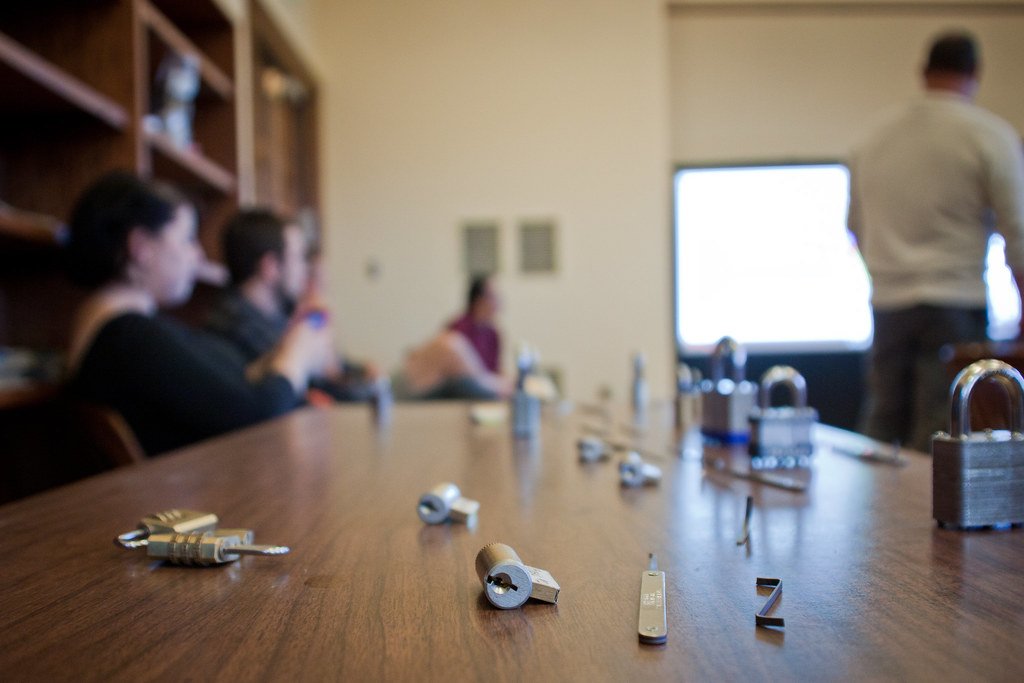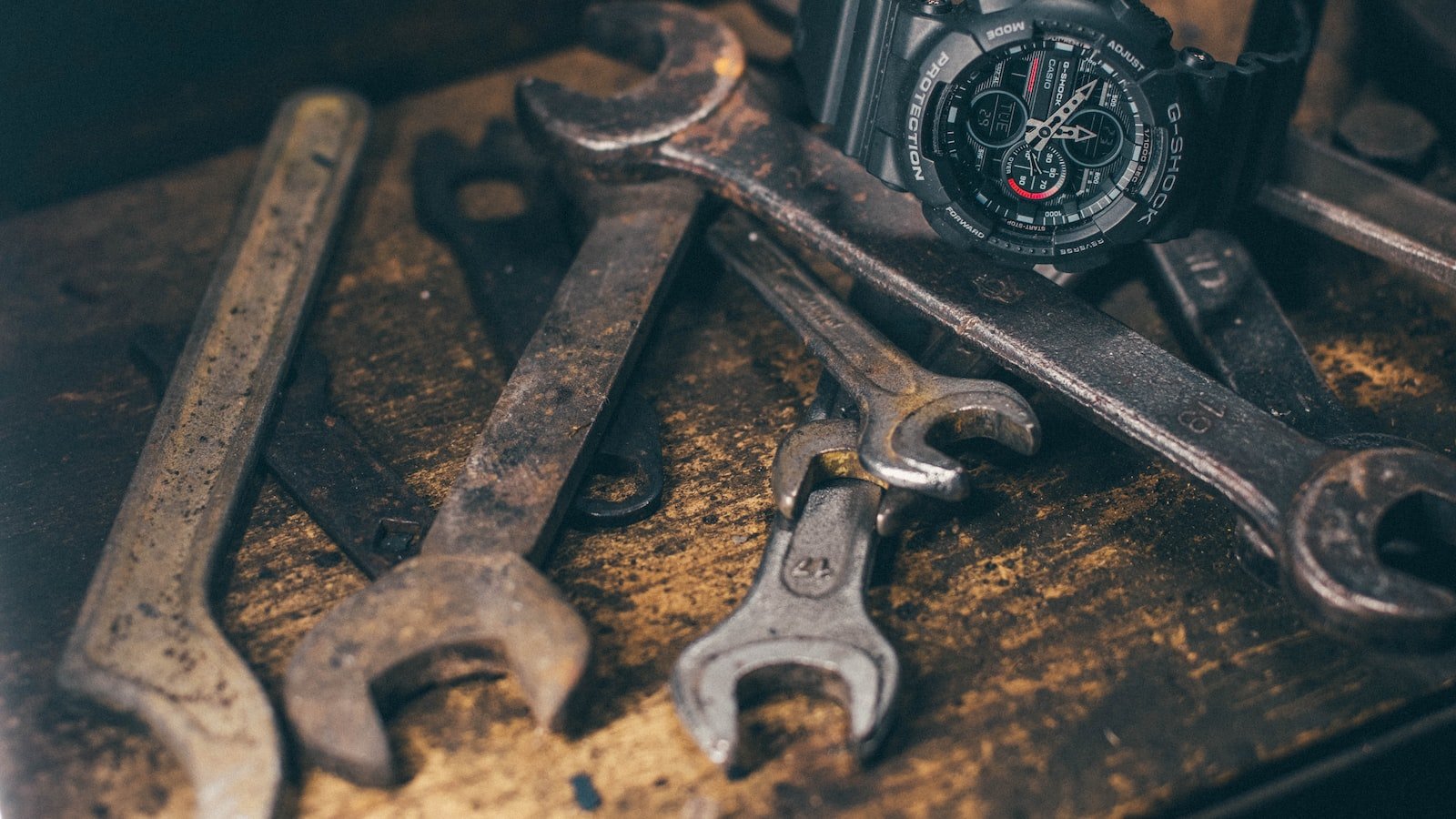Imagine a world where mysterious doors remain permanently locked, impenetrable fortresses hiding secrets and treasures beyond our reach. Now, envision a small, inconspicuous metal instrument, possessing the extraordinary power to unshackle these enigmatic barriers. Enter the realm of “locksport,” a captivating endeavor that explores the art and science of lock picking. While the practice may conjure up images of dark alleys and clandestine operations, one humble tool quietly steals the spotlight as the unsung hero of this mesmerizing universe: the tension wrench. In this article, we delve into the mystique of tension wrenches, unearthing how these unassuming devices are the key to unlocking a captivating world of locksport.
Table of Contents
- Unlocking the Mystery: Understanding Tension Wrenches in Locksport
- A Key Component: How Tension Wrenches Enable Lock Manipulation
- Choosing the Right Tool: Key Considerations for Selecting a Tension Wrench
- Mastering the Art: Techniques for Properly Applying Tension with a Tension Wrench
- Beyond Basic Picks: Exploring Advanced Tensioning Techniques in Locksport
- Q&A
- Insights and Conclusions

Unlocking the Mystery: Understanding Tension Wrenches in Locksport
As any locksmith or locksport enthusiast can tell you, tension wrenches are an essential tool in the art of picking locks. These seemingly simple devices hold the key (pun intended) to manipulating the intricate mechanisms within a lock. So, let’s delve into the fascinating world of tension wrenches and uncover their secrets!
Firstly, what exactly is a tension wrench? In its basic form, a tension wrench is a thin, L-shaped piece of metal that fits snugly into the lock’s keyway. It acts as a vital component in applying rotational force to the lock’s cylinder, allowing the picking tools to engage with the pins and manipulate them into the proper position.
There are various types of tension wrenches, each designed for specific lock types and picking techniques. Here are a few notable ones:
- Standard Tension Wrench: A staple in the lockpicker’s toolkit, this simple wrench provides stability and control during the picking process.
- Top-of-Keyway Tension Wrench: Shaped like a flat bar, this versatile wrench is inserted at the top of the keyway, allowing for greater maneuverability and access to pins.
- Bottom-of-Keyway Tension Wrench: This wrench slides into the bottom of the keyway and offers a different gripping angle, ideal for certain lock designs.
Remember, mastering the use of tension wrenches requires both skill and practice. Understanding their purpose, variations, and how they interact with other lockpicking tools will unlock a world of possibilities for any locksport enthusiast.

A Key Component: How Tension Wrenches Enable Lock Manipulation
When it comes to the art of lock manipulation, one cannot underestimate the importance of tension wrenches, also known as torque wrenches. These small yet powerful tools play a pivotal role in gaining access to locked doors, cabinets, or other secure mechanisms. Used in conjunction with a lock pick, tension wrenches facilitate the delicate dance required to open locks without the original key. Let’s explore the fascinating mechanics behind these indispensable devices.
Functionally, a tension wrench is designed to apply torque or rotational force to a lock’s keyway, mimicking the action of an actual key. This torsion creates tension on the lock’s internal components, specifically the driver pins and springs. Applying just the right amount of tension is crucial, as too much or too little can hinder the manipulation process. Master locksmiths develop a keen sense of touch and rely on their finely honed skills to maintain precise tension while maneuvering the lock pick.
- Types of Tension Wrenches: Tension wrenches come in various shapes and sizes, each with its own unique benefits. Common options include the L-shaped tension wrench, the double-ended tension wrench, and the offset tension wrench. Locksmiths often experiment with different wrench styles to find the optimal one for a particular lock.
- The Subtle Art of Tension: Achieving the perfect balance between applying tension and manipulating the lock pins is an acquired skill that takes time and practice to master. Too much force can result in the pins becoming seized, while too little pressure fails to engage the lock mechanism. Expert lock manipulators develop a feel for the subtle feedback provided by a lock’s pins, allowing them to detect binding or set pins during the intricate unlocking process.
- Understanding the Inner Workings: Tension wrenches exploit the fundamental principles of pin tumbler locks. These locks require the correct alignment of their internal pins to allow the lock cylinder to rotate freely. By applying tension with a wrench, the locksmith can manipulate the individual pins until they are all correctly aligned. Once this delicate balance is achieved, the lock succumbs to the control of the locksmith and effortlessly opens.
In conclusion, tension wrenches are essential tools in the realm of lock manipulation, enabling locksmiths and skilled individuals to exercise their expertise and bypass locked barriers. Through their precise application of torque, these unassuming tools unlock a world of opportunities and challenge the very concept of security. Whether you find yourself in need of a locksmith’s assistance or simply marvel at the intricacies of lock picking, the role of tension wrenches in this captivating art cannot be overstated.

Choosing the Right Tool: Key Considerations for Selecting a Tension Wrench
So, you’ve decided to delve into the intriguing world of lock picking and are ready to dive headfirst into this fascinating art. But before you embark on your journey, there’s one crucial decision you must make – finding the perfect tension wrench. Choosing the right tension wrench is vital, as it can significantly impact your success as a lock picker. Here, we explore some key considerations to help you in your quest for the ideal tension wrench.
1. Material: The material of the tension wrench plays a crucial role in its performance and durability. Opt for high-quality materials like stainless steel or titanium, as they provide strength and resilience, ensuring your tension wrench lasts for years to come.
2. Size and Shape: Different locks require various tension wrench sizes and shapes. Consider the type of locks you are most likely to encounter and choose a tension wrench that complements their specific requirements. From standard L-shaped tension wrenches to offset, twist, or pry-bar shaped options, explore the diverse range available to find the perfect fit for your lock picking endeavors.
3. Grip and Comfort: When spending hours delicately manipulating locks, comfort and grip become paramount. Look for a tension wrench that features an ergonomic handle, providing a firm and comfortable grip. Avoid designs that can slip or strain your hand during extended lock picking sessions.
With these key considerations in mind, you’re now equipped to make an informed decision when choosing the right tension wrench for your lock picking journey. Remember, a well-chosen tension wrench can be the key to unlocking endless possibilities in the captivating world of lock picking. Happy picking!
Mastering the Art: Techniques for Properly Applying Tension with a Tension Wrench
Techniques for Properly Applying Tension with a Tension Wrench
When it comes to picking locks, one of the key skills you need to master is applying tension with a tension wrench. This technique is crucial in manipulating the pins inside the lock cylinder, allowing you to successfully open the lock. Here are some tried and tested techniques to help you become a master in applying tension:
- Find the right amount of tension: Applying the right amount of tension is a delicate balance. Too much and you risk jamming the pins, too little and the lock won’t budge. Experiment with different amounts of pressure, finding the sweet spot where you can feel slight give in the lock without putting too much force.
- Apply consistent pressure: Consistency is key when applying tension. Maintaining a steady and continuous pressure throughout the picking process will help you gain better control over the pins. Avoid fluctuating the pressure as it may cause the pins to reset and make the picking process more challenging.
- Use the right wrench grip: There are several grips you can use when holding a tension wrench, such as the bottom of the keyway or the top of the keyway grip. Experiment with different grips to find the one that feels most comfortable and provides good leverage and control. Remember to apply tension in the opposite direction to the rotation of the lock cylinder.
Remember, mastering the art of applying tension with a tension wrench takes practice and patience. With time, you’ll develop a feel for the right tension and gain confidence in your lock-picking skills. Happy picking!
Beyond Basic Picks: Exploring Advanced Tensioning Techniques in Locksport
Locksport is an intriguing world where enthusiasts explore the intricate art of picking locks. While basic lock picking techniques are a great way to start, experienced locksport aficionados know that advancing their skills requires delving into advanced tensioning techniques. These techniques allow for greater precision and finesse, making it possible to conquer even the trickiest of locks.
One advanced tensioning technique that stands out is the “top of keyway” tensioning method. This method involves placing the tension wrench at the top of the keyway instead of the bottom. By doing so, it provides better control and reduces the chance of oversetting pins. Additionally, using a tension wrench with a wider profile can distribute tension more evenly, leading to greater success in lock manipulation.
Another advanced technique is the “feather touch” technique, which emphasizes light and delicate tension. It requires a delicate touch, almost as if you’re gently caressing the lock. By applying the bare minimum amount of tension, you minimize the risk of overloading the lock’s internals and reduce the chance of inadvertently binding the pins. This advanced technique allows for a greater tactile connection with the lock, enhancing your ability to detect subtle feedback signals and ultimately pick the lock more effectively.
Remember, as you explore these advanced tensioning techniques, practice is essential. Take the time to experiment with different tools, tension wrench sizes, and techniques to find what works best for you. Locksport is a journey of continuous learning and experimentation, and by venturing beyond basic picks, you unlock a world of possibilities and challenge yourself to master the art of lock manipulation like never before. So equip yourself with knowledge, finesse, and determination, and step into the realm of advanced tensioning techniques in locksport.
Q&A
What are tension wrenches?
Tension wrenches are tools used in lock picking that apply rotational force to the lock cylinder, allowing the locksmith to turn the plug and unlock the device.
Why are tension wrenches essential in the world of locksport?
Tension wrenches are crucial in locksport as they provide the necessary pressure to manipulate the lock pins. Without them, lock manipulation would be nearly impossible.
What are the different types of tension wrenches available?
Locksport enthusiasts have a variety of tension wrench options at their disposal. Some common types include twisted tension wrenches, pry bar tension wrenches, and double-ended tension wrenches.
How do tension wrenches work?
Tension wrenches utilize the principle of applying rotational pressure on the lock cylinder to simulate the motion used with a regular key. This enables the locksmith to mimic the turning action required to unlock the lock.
Can anyone use a tension wrench?
While tension wrenches are widely used in locksport, it is important to note that lock picking should only be practiced by individuals who have proper authorization or permission to do so. Engaging in locksport without the necessary consent is illegal.
Where can one obtain tension wrenches?
Tension wrenches can often be found online or at specialized locksmith supply stores. However, it is crucial to abide by local laws and only purchase these tools for legitimate purposes.
Are tension wrenches only used for picking locks?
Apart from lock picking, tension wrenches can also come in handy when performing lock repairs or rekeying. They are versatile tools that aid in various aspects of locksmith work.
Can tension wrenches damage locks?
When used by a skilled locksmith, tension wrenches should not cause damage to locks. However, improper use or excessive force can potentially harm the lock, leading to the need for repair or replacement.
Are tension wrenches safe for beginners to use?
For beginners, it is important to start with proper training and guidance before attempting to use tension wrenches. Without proper knowledge and technique, there is a risk of damaging the lock or even injuring oneself.
Insights and Conclusions
As we bring our journey through the fascinating world of locksport to a close, one thing is abundantly clear: tension wrenches truly are the unsung heroes of this extraordinary craft. These unassuming tools, so often overshadowed by their more glamorous counterparts, play an indispensable role in every lockpicker’s arsenal.
While lockpicking may stir up images of intricate picking tools and delicate maneuvers, it is the humble tension wrench that provides the crucial pressure needed to engage with the lock’s internal mechanisms. Often just a simple L-shaped piece of metal, this unassuming tool is like the conductor of an orchestra, orchestrating the delicate dance between the lock’s pins and the picker’s skillful manipulations.
But it is not only their mechanical importance that makes tension wrenches so remarkable. They embody the essence of locksport itself: patience, precision, and perseverance. Like a lockpicker’s silent confidant, these unpretentious tools share the spirit of exploration and the joy of triumph with every turn of the cylinder.
As we reflect on the world of locksport, we must acknowledge the vital role played by tension wrenches, hidden in plain sight amidst the glamour of their fellow tools. They deserve our recognition and respect as they diligently bear the burden of tension, allowing the skilled lockpicker to navigate the intricate weaving of pins and springs towards unlocking success.
So, let us take a moment to raise our metaphorical glasses in appreciation of the unassuming tension wrench, an unsung hero that adds depth and richness to the symphony of locksport. It is through their understated presence that we realize how even the smallest and simplest of tools can create the biggest impact.
As we bid farewell to the captivating world of locksport, let us remember the tension wrenches that silently accompanied us on this thrilling journey. They have taught us valuable lessons about the art of patience, the virtue of precision, and the beauty of perseverance. And with their unwavering assistance, we too become the heroes of our own tales, turning unlocked cylinders into personal triumphs.
Farewell, dear tension wrenches, until our paths cross again.
As an affiliate, my content may feature links to products I personally use and recommend. By taking action, like subscribing or making a purchase, you’ll be supporting my work and fueling my taco cravings at the same time. Win-win, right?
Want to read more? Check out our Affiliate Disclosure page.